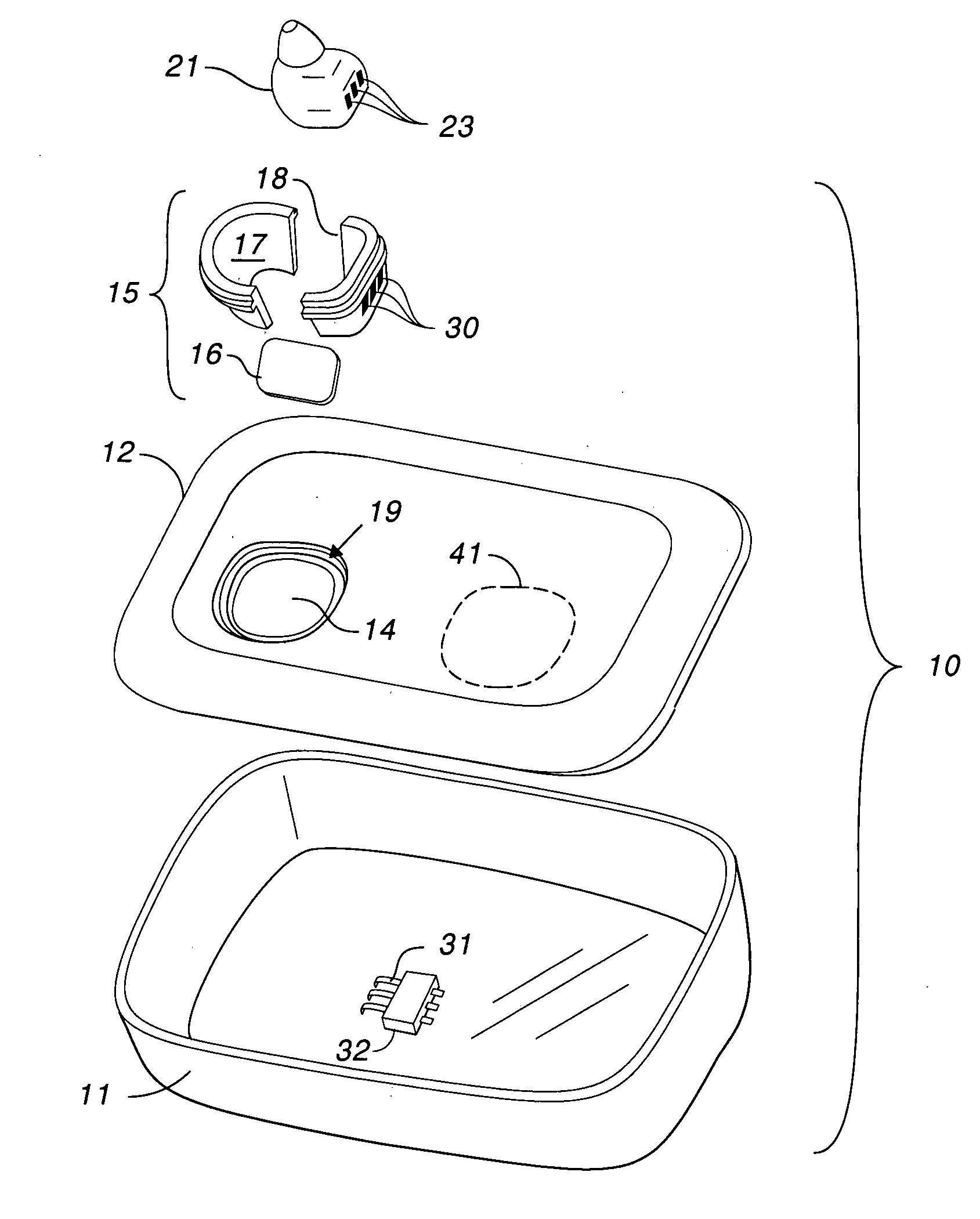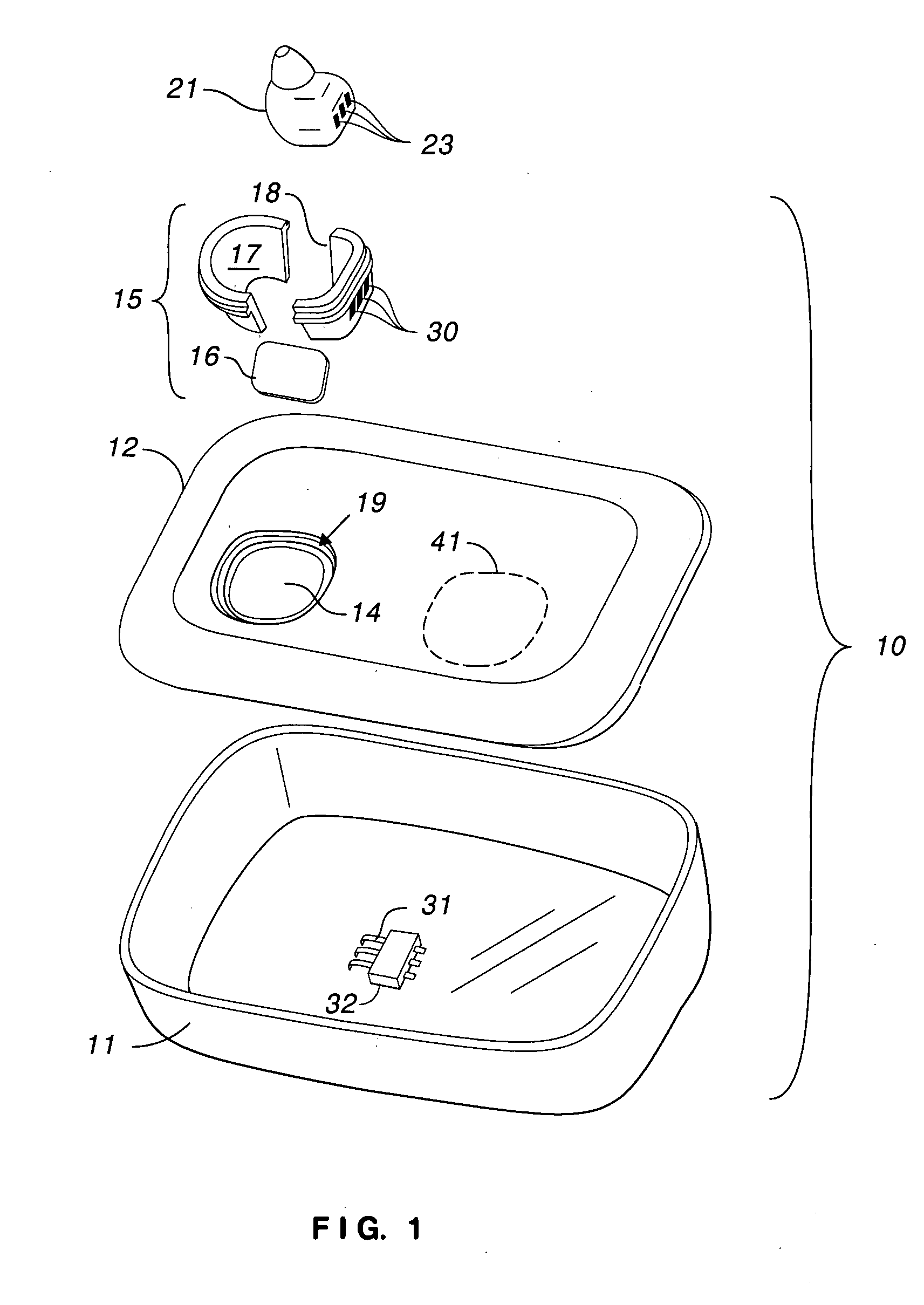Modular charger for hearing aid
a module charger and hearing aid technology, applied in the field of hearing aids, can solve the problems of having to remove the battery from the hearing aid, the diversity of hearing aids on the market, and the inconvenience of having to replace the battery, so as to reduce the cost of manufacturing battery chargers
- Summary
- Abstract
- Description
- Claims
- Application Information
AI Technical Summary
Benefits of technology
Problems solved by technology
Method used
Image
Examples
Embodiment Construction
[0012]In the FIGURE, charger 10 includes base 11 and cover 12 of suitable shape and volume for containing the electronics (not shown) that actually charges one or more batteries in one or more hearing aids. Cover 12 includes socket 14. Although illustrated as somewhat rectangular, socket 14 can have any desired shape. In accordance with the invention, a custom adapter fits within socket 14 to hold a hearing aid having a particular shape in place for charging.
[0013]In a preferred embodiment of the invention, adapter 15 includes floor 16 and shells 17 and 18. Although an adapter could be made in a single piece, the shells can have intricate shapes and yet be easily released from a mold. Floor 16 can be molded as part of either shell. Adapter 15 fits within socket 14 and adapts charger 10 to a particular hearing aid or model of hearing aid. Adapter 15 can be made from any suitable material. A resilient plastic is preferred.
[0014]Adapter 15 preferably includes a lip for engaging cover 1...
PUM
 Login to View More
Login to View More Abstract
Description
Claims
Application Information
 Login to View More
Login to View More - R&D
- Intellectual Property
- Life Sciences
- Materials
- Tech Scout
- Unparalleled Data Quality
- Higher Quality Content
- 60% Fewer Hallucinations
Browse by: Latest US Patents, China's latest patents, Technical Efficacy Thesaurus, Application Domain, Technology Topic, Popular Technical Reports.
© 2025 PatSnap. All rights reserved.Legal|Privacy policy|Modern Slavery Act Transparency Statement|Sitemap|About US| Contact US: help@patsnap.com


